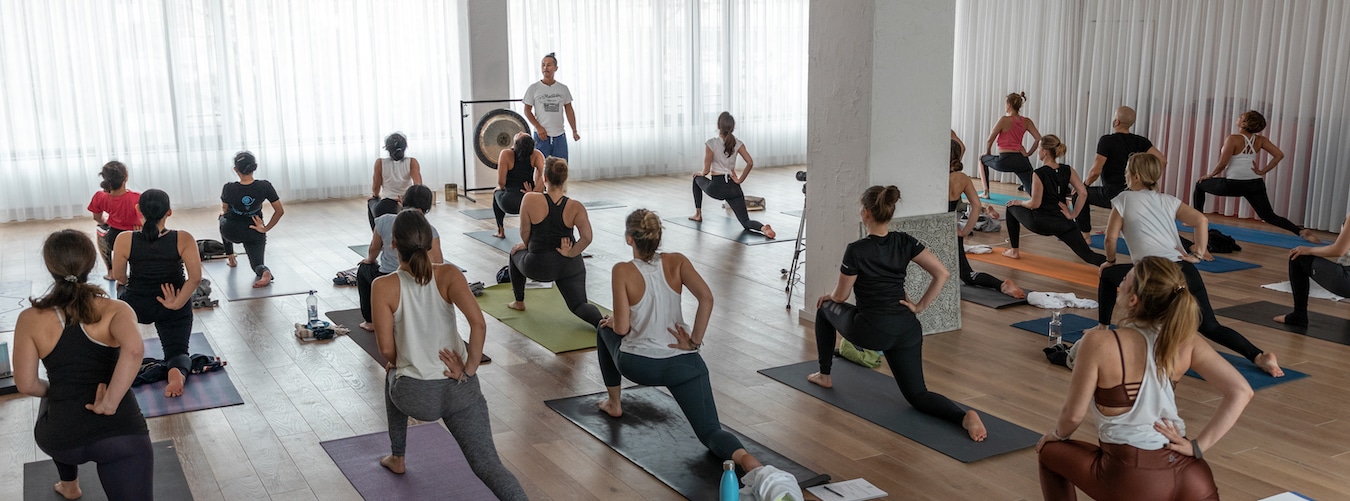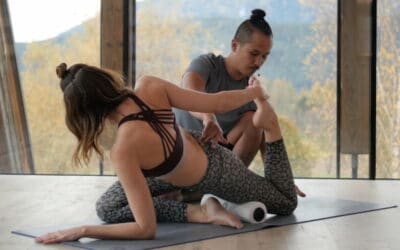Yoga content online nowadays is manifold. It seems like everyone out there who once stepped on a yoga mat has to say something about yoga, can answer yoga questions, and has recommendations and tips on how to improve your yoga practice.
While it’s great that modern technology allows us to do our research from the comfort of our home, the vast variety of – often contradictory – information out there can be very confusing.
Especially when you start teaching yoga, you may want to dive deeper into different yoga topics and learn more about proper alignment in yoga. And suddenly you ask yourself yoga questions you never cared about before.
To help you find your way out of the jungle of information, we’ve collected 9 of the most frequently asked questions in a yoga teacher training – of course along with the answers. The questions collected during an Inside Yoga Teacher Training were answered by Inside Yoga studio founder Young Ho Kim.
This article provides answers to these 9 yoga questions from yoga teacher trainings:
- 1. Why Do People Get Muscle Cramps in Yoga?
- 2. Feet together or apart?
- 3. Does Yoga Have to Hurt?
- 4. How to Align the Front Foot in Pidgeon Pose?
- 5. How Much Rest Does the Body Need Between Yoga Classes?
- 6. Do I Need to Plan the Full Yoga Class Ahead?
- 7. Can I Bend the Knee More Than 90 Degrees?
- 8. Do I Need to Know the Sanskrit Names of All Poses?
- 9. Why Should I Pay Money for Online Yoga When There’s Enough Free Content out There?
“When one teaches, two learn.”
1. Why Do People Get Muscle Cramps in Yoga?
First of all, it’s important to know that a muscle cramp is not necessarily a bad thing. It simply means that muscles are activated that haven’t been engaged too much before and/or in a way they haven’t been used very often.
Secondly, be assured that getting cramps in a yoga class is nothing unusual. The most common problem areas are the calves and feet. However, since cramps can be embarrassing and force practitioners to get out of the yoga pose and walk it off, it’s a good idea to know how to prevent cramps, or how to deal with them.
Apart from muscular causes such as muscle tightness and fatigue, muscle cramps can occur due to dehydration or mineral imbalance in the body. The culprit often is a low level in magnesium, calcium, or potassium, which can easily be remedied by dietary intake or, if you’re impatient, the use of a supplement.
The muscular causes related to the yoga practice are mostly induced by actions such as hyperextending (locking) the knees since this interrupts the fluidity of movement and circulation in the leg. Other possible reasons for muscle cramps in yoga include the action of gripping the toes into the floor when trying to balance, or cold feet.
So, there are a few easy remedies to prevent muscle cramps:
- Staying hydrated by drinking enough water, especially before, during, and after the yoga class.
- Making sure they body is provided with adequate amounts of minerals such as calcium, magnesium, and potassium. Nutritional intake should be preferred to supplementation.
- Avoiding locking, i.e. hyperextending, the knees.
- Relaxing the toes and not gripping them into the yoga mat, also – and particularly – in balancing poses.
- Keeping the feet warm by using socks at the beginning of the class until the feet get warm.
Once a cramp occurs, there’s no way around getting out of the pose and stopping for a few breaths. Stretching and massaging the affected area can help it to relax and release. Possible stretches include Downward-Facing Dog or Forward Fold to stretch the calf muscles, or sitting in Hero’s pose to stretch the arches of the feet and massaging the backs of the feet.
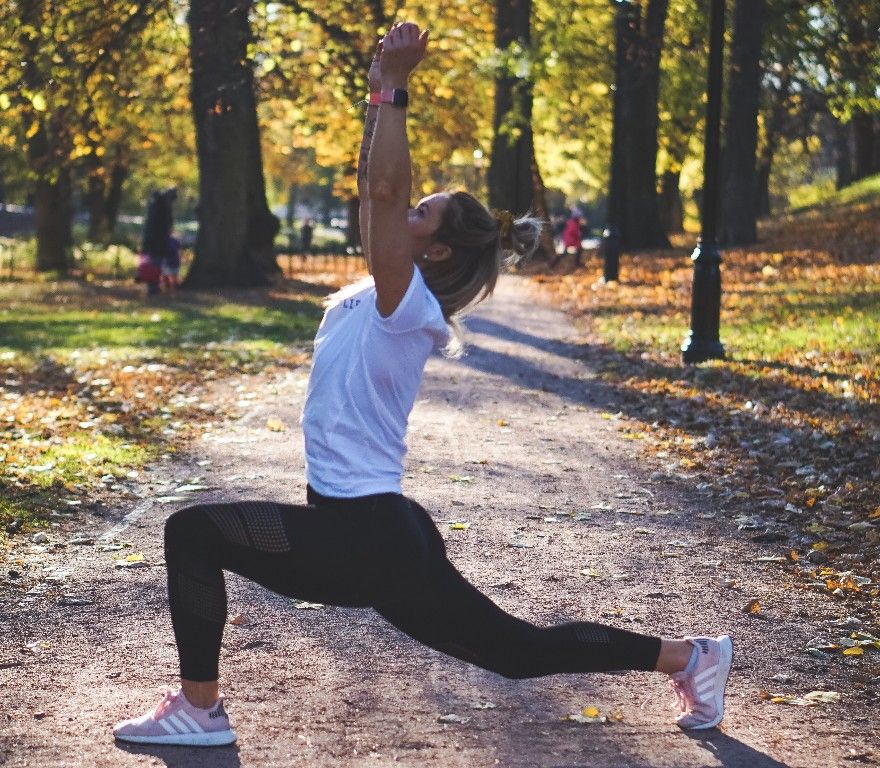
Stretching often helps to release muscle cramps. Photograph by Charlotte Karlsen on Unsplash.
2. Feet together or apart?
As a rule of thumb, in yoga poses from Downward-Facing Dog to High-Lunge positions the feet should be hip-width apart. Place the fingers about a finger-width inwards from the pelvic bones on the hip joint. From there, following the line down the legs, the fingers should be in one line with the second toe.
This also applies to Mountain pose, where you might have been taught to place the big toes together. However, keeping the feet hip-width apart instead corresponds to the body’s plumb line, i.e. the line of gravity. When things are in a straight line, the weight naturally travels down that line and this is therefore the most energy-efficient way to carry the body weight.
So, why have many been taught to keep the feet together with the big toes touching? Maybe simply because it looks better. From an anatomical perspective, there is no reason why one should keep the feet together. On the contrary, the line of force is in an angle that requires more energy.
Thus, placing the feet hip-width apart is the safest way for the feet and the knees to carry the body weight. Just think of skyscrapers: They are also vertical and not at an angle. Can you imagine what would happen if they had skew foundations? The same is true for the legs.
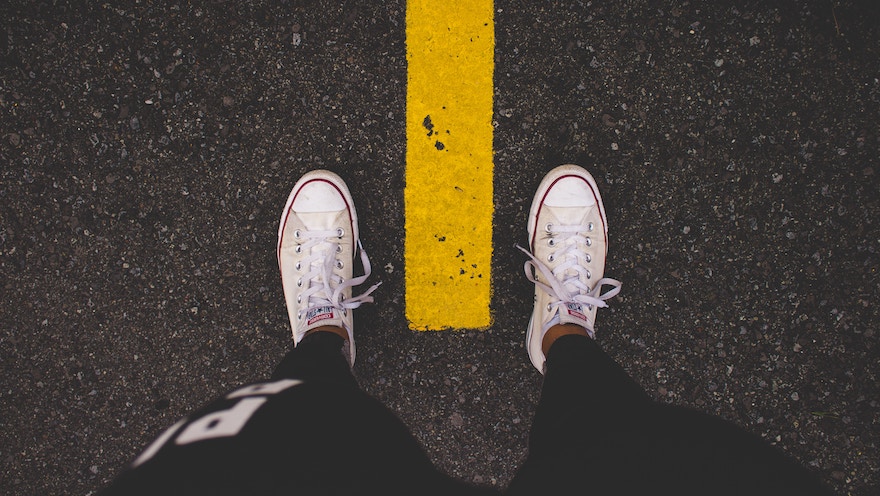
Always keep the feet hip-width distance apart. Photograph by Nadine Shaabana on Unsplash.
3. Does Yoga Have to Hurt?
How often do you have students in your class asking: ‘It doesn’t hurt. Am I doing it wrong?’
It’s important to note here that there’s a big (!) difference between pain and physical effort. While it helps your flexibility and strength to put a certain strain on your muscles, yoga should never be painful. Especially not after class. Instead of feeling achy, a yoga class should leave people released and with a feeling of accomplishment.
Sharp pain is always a sign to back out of the pose in order to avoid putting too much stress on the musculoskeletal system. While the feeling of sore muscles after class as a result of unusual muscular engagement can be a reward, lasting pain and aches are a sign of wrong muscular engagement and potential injury.
The physical effort experienced in yoga is rather intended to ease pain in the long term instead of adding even more pain.
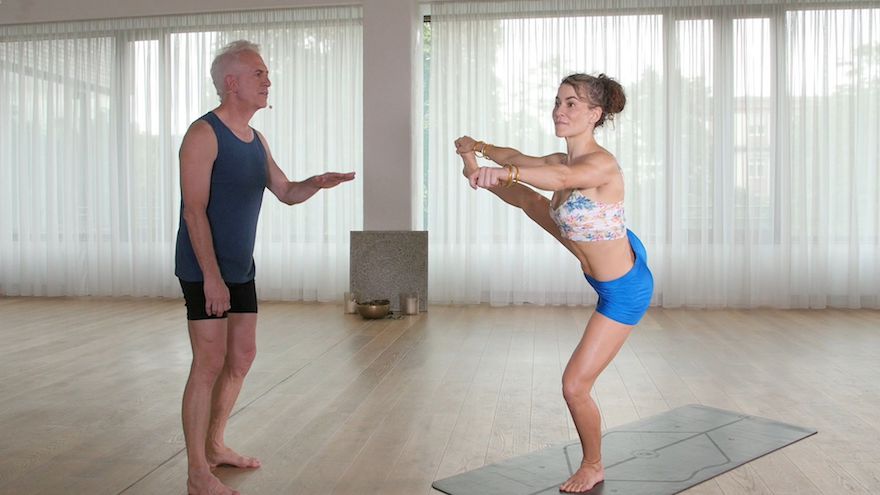
All Bowspring poses are based on a postural system for everyday functionality. Photograph by TINT.
4. How to Align the Front Foot in PiDgeon Pose?
Most teachers persist on flexing the front foot in Pidgeon pose. But does it actually matter whether the foot is flexed or pointed?
To answer this question, it’s necessary to look at the relation between the ankle and the knee joint: When the ankle joint is aligned with the leg, the knee is also in line. However, when the foot falls in and the ankle joint is bent outward (supination), there is more stress on the lateral ligament of the knee. This is the case when the shin is aligned with the short edge of the yoga mat. Flexing the foot prevents lax ligaments in the ankle and therefore helps to stabilize the knee.
However, most practitioners aren’t able to align the shin with the front of the yoga mat. This requires a certain amount of flexibility in the hip joint. But this shouldn’t be the main focus in Pidgeon pose. The main focus should rather be on the stretch in the piriformis muscle – without injuring the knee.
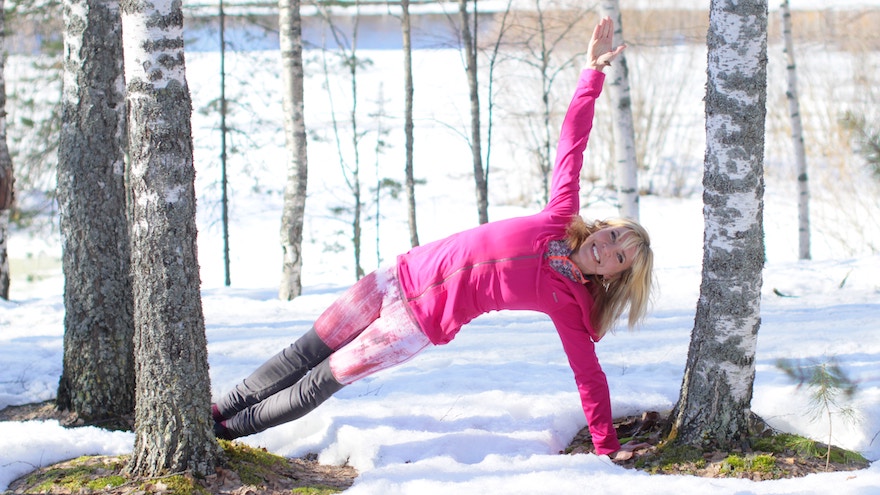
Yoga is indented to give you health and happiness. Photograph by Minna Hamalainen on Unsplash.
If the lower leg is not parallel to the front of the yoga mat, the angle in the knee joint is much more acute. In that case, it’s a better idea to keep the front foot pointed to keep the ankle joint aligned. The more acute the angle in the knee joint, the more stress is put on the lateral ligaments. And you don’t want to put even more stress on the ligaments by flexing the foot and bringing it out of alignment.
Therefore, it only makes sense to flex the front foot if the shin is parallel to the front of the yoga mat. In all other cases, it’s safer to point the foot.
If you’re looking for answers to further alignment questions, check out our free yoga alignment eBook where we reveal 3 yoga alignment secrets that you may not have been aware of before. The best thing about them is that they apply to almost every yoga pose and can therefore be a big help throughout your entire yoga practice. Download it for free and use it as a reference guide for your teaching.
5. How Much Rest Does the Body Need Between Yoga Classes?
Some students may wonder if they can do yoga every day or even go to two consecutive yoga classes in a row. This question may arise due to recommendations from other sports such as running or weight-lifting, where it’s often suggested to rest at least one day between two training sessions.
The reason behind such recommendation is the so-called supercompensation model used in sports science. This basically means that, after adequate recovery from exercise the body wasn’t used to, the body adapts itself to prepare for the next expected challenge. This is why the body needs periods of rest to progress.
However, yoga is no competitive sport (it should actually be anything but competitive!). It rather is a more subtle form of sport where you build strength by increasing the mobility and flexibility of muscles, tendons, and ligaments. Although especially yang yoga styles induce stretching by muscular activity, the strain put on the body is much less than in high-performance sports where supercompensation is an important means of performance enhancement.
For yoga, rather the contrary is true: in order to feel improved flexibility and mobility, constant practice is required.
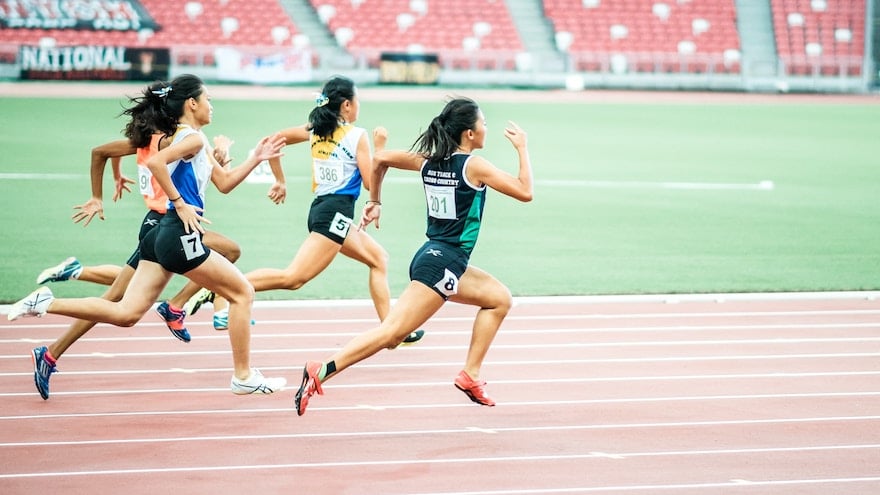
Strict periods of rest are only mandatory in competitive sports. Photograph by Jonathan Chng on Unsplash.
6. Do I Need to Plan the Full Yoga Class Ahead?
Of course, there is no one-size-fits-all approach to this question. Some may feel safer having a complete yoga class plan written down on a piece of paper, while others prefer to go with the flow and build the yoga class on the spot.
It also depends on the yoga style you’re teaching: If your class is an Inside Flow session with a set sequence or choreography, you want to make sure that you know the flow by heart. So, you do well to memorize the sequence of poses before stepping in front of your students.
Another important factor is your level of experience as a yoga teacher: If you’re new to teaching, you may want to plan your yoga classes in more detail. There are so many things to keep in mind when you start teaching – not to mention the nervousness you may feel with so many pairs of eyes suddenly staring at you – so you don’t want to add additional stress because you have to come up with yoga poses and transitions on the spot and make them seem organised and well-planned. Having a rock-solid plan (that you have practiced yourself already) can help you to stay calm and focused.
On the other hand, it’s often difficult to anticipate what kind of students will attend your class, especially when you teach at a gym or studio with changing audience. And even if you have the same people in front of you every time you teach, they may feel different on different days. Your students will appreciate it if you’re able to take account of their actual needs. While it’s a good idea to have a guiding thread running through your yoga class, try to stay flexible enough to adapt to the current situation.
If you’re looking for yoga class plans that you can use for your teaching, we’ve created something special for you: a free eBook that contains yoga class plans ready to use for your classes. The eBook offers different classes for different levels, where you can find the relevant yoga poses along with their descriptions in a logical order. The perfect guide when preparation time is short or you’re new to teaching and need some inspiration.
7. Can I Bend the Knee More Than 90 Degrees?
A common advice in yoga classes is to not bend the knee more than 90 degrees. The intention behind this is to avoid knee pain. However, is it healthy to teach ourselves to never have our knees past 90 degrees? Keep one thing in mind: We can only become good at things we do. We won’t become good at things we don’t do.
In our modern western world, we’re not used to bending our knee beyond 90 degrees. We sit on our beds, at the table, on the loo, in the car, on the couch etc.: The knee is always bent at around a 90 degree angle (unless you’re either really tall or really short).
So, we rarely use the knee in a completely bent position and therefore don’t build any strength in that position. The risk of injury will be higher the less strength and stability we have in a certain movement. This means that, if the body is suddenly faced with the challenge to bend the knee deeper in yoga or other sports, for example, it may respond with pain to this unusual movement.
However, if you think about the people who traditionally practiced yoga in ancient India, you will notice that they spent a big part of their day squatting lower than 90 degrees and even sitting and sleeping on the floor. Bending the knee beyond a right angle was nothing unusual for them and they therefore had enough strength and stability to perform this movement.
Another thing to keep in mind when making absolute statements (such as: ‘Never bend your knee past 90 degrees.’) is the fear this may create in your students: Constantly telling them that they should avoid bending their knees past 90 degrees, that they shouldn’t do this, avoid that, etc. will certainly make them afraid to do that motion. And research has shown that fear is one of the biggest risk factors when it comes to injuries.

We’re simply not used to bending our knees past 90 degrees anymore.Photograph by Sunbae Legacy on Canva.
8. Do I Need to Know the Sanskrit Names of All Poses?
Just answer one simple question: Are you better able to perform a certain pose by using the Sanskrit term? The thing is, you don’t become a better yoga teacher by calling the poses by their Sanskrit name.
Apart from that, the Sanskrit terms for poses are often difficult to remember, and even more difficult to pronounce. Especially in Ashtanga yoga, the names of the poses are incredibly long and in the end, they simply mean ‘hand to big toe’ (Hasta Padangusthasana), for example. In addition to floundering while teaching, you risk losing your students halfway through the class since they may simply have no idea what you’re talking about.
Also bear in mind that using a ‘mystic’ language in class can put some students off that may be reluctant to the traditional side of yoga and are just there for the stretch. Hearing unknown words throughout the entire class may leave them with the impression that yoga is something mystical from a different world. Remember: Your students want to learn how to perform the poses properly instead of spending hours learning vocabulary.

Don’t lose your students by using complicated vocabulary. Photograph by Nick Fewings on Unsplash.
Don’t get it wrong: If you feel comfortable using the Sanskrit names and your students appreciate this effort – congratulations! There’s nothing wrong with that. Not at all. However, if you’re struggling to memorize the Sanskrit terms, don’t worry too much about them. Use your energy for other aspects of your teaching instead.
9. Why Should I Pay Money for Online Yoga When There’s Enough Free Content out There?
Nowadays, there are so many free yoga videos out there on the Internet that you may wonder why you should pay money for yoga content.
However, with this huge amount of content offered online, it’s impossible to identify high-quality content amongst the masses. Some of the yoga content available on the Internet can even be dangerous and cause serious harm since it’s based on superficial knowledge and incorrect practice.
Be skeptical about free content because people who really have to say something and can add value to your practice are professionals and are not afraid of taking money in return for their services provided.
Simply compare it to other services: Of course your mum could give you a haircut for free. But you may risk losing a piece of your ear. If you want to be on the safe side and prefer to have a professional haircut, you go to the hairdresser and pay money.
This is why we from TINT are committed to offering excellent yoga content from yoga teachers who really have something to share. We don’t select our yoga teachers based on their number of followers on social media or on their looks or flexibility.
We want to provide content from professional yoga teachers who have fundamental knowledge and experience. Some of them have even created their own yoga style on the basis of their years – or even decades – of experience as both yoga teachers and practitioners.
Find out more about the importance in excellence in yoga – the reason why we created TINT.
Take, for example, Cameron Shayne, the founder of Budokon yoga, who has been studying and sharing Yoga, Martial Arts, and Zen meditation collectively for over 30 years. The same is true for Desirée Rumbaugh, who has studied Iyengar and Anusara yoga also for more than 30 years. Another great example are the Bowspring programs by John Friend and Desi Springer, who co-created the Bowspring method on the basis of their joint experience, studies and learnings.
Learn from Desi Springer and John Friend in the Essential Training Course of the Bowspring Method.
If you’re interested in attending a yoga teacher training yourself, check out, for example, Inside Yoga, which is he biggest and most renowned yoga studio and academy in Germany and was founded by Young Ho Kim.
To get an idea of what a teacher training looks like, you can watch our 3-day intensive training from Inside Yoga Teacher Training online on TINT (German only).
We also collected the joint knowledge of our experienced yoga teachers and summarized them in a free yoga alignment eBook to make their wisdom available to you. You’ll find fundamental yoga alignment principles explained that will make a huge difference to your yoga practice. Download it for free and take your yoga practice to the next level. Never stop learning!

